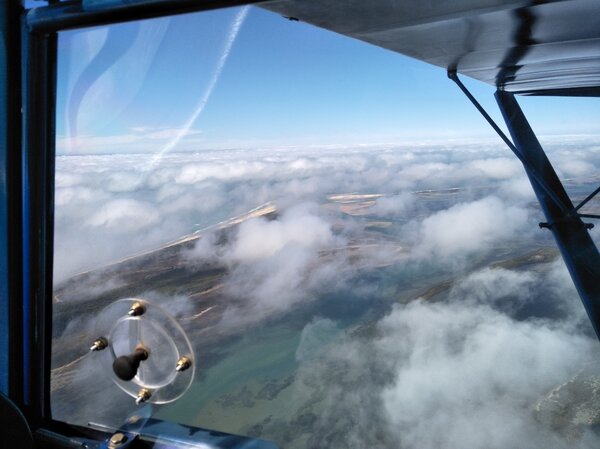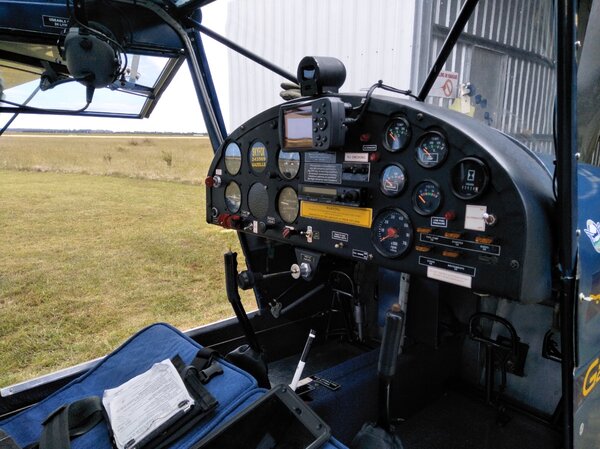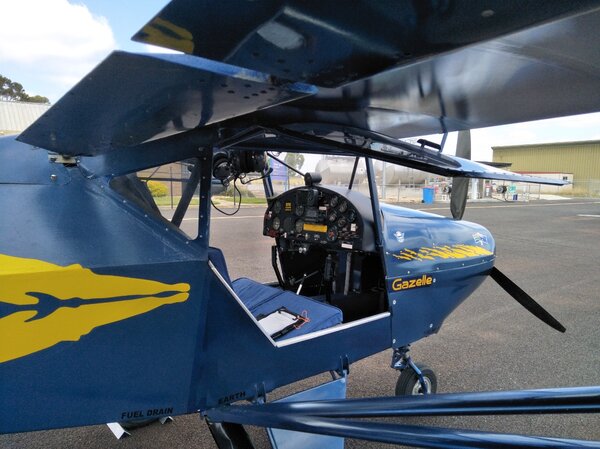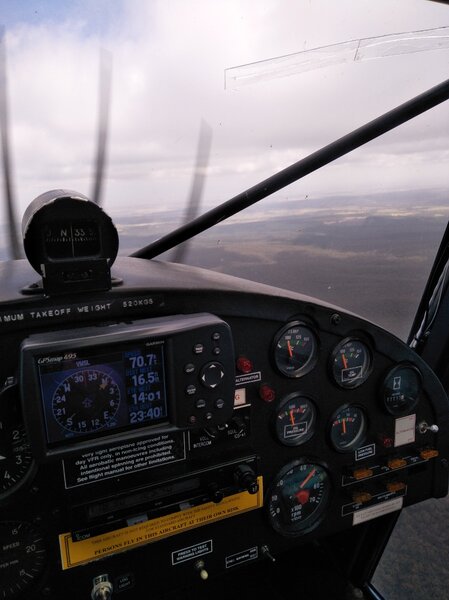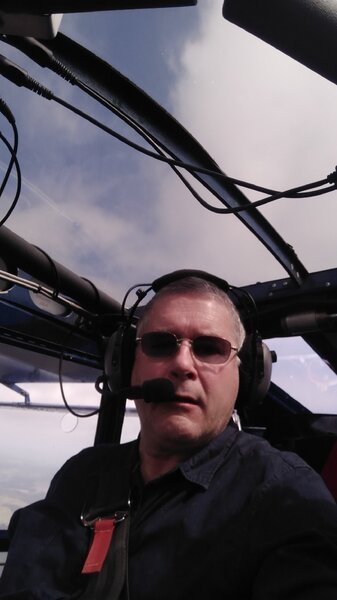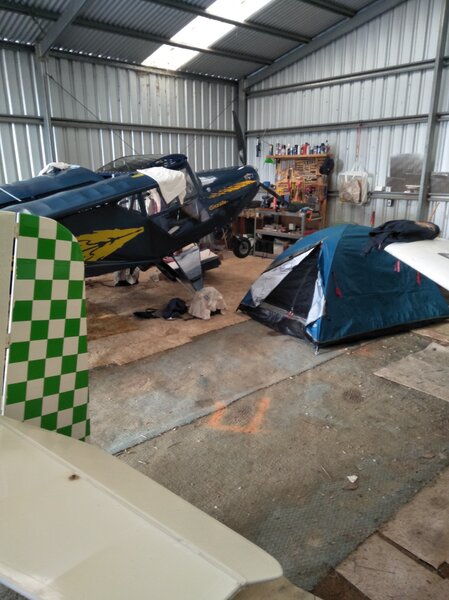-
Posts
459 -
Joined
-
Last visited
-
Days Won
17
Content Type
Profiles
Forums
Gallery
Downloads
Blogs
Events
Store
Aircraft
Resources
Tutorials
Articles
Classifieds
Movies
Books
Community Map
Quizzes
Videos Directory
Everything posted by F10
-
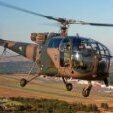
Goolwa Hangar 1: Jabiru 0 30/12/21
F10 replied to KRviator's topic in Aircraft Incidents and Accidents
Wheel barrowing can rapidly get out of hand, as the aircraft slows down, the tailplane becomes ineffective at damping out the pitching and you lose control of the bouncing, or get out of synch with desperate elevator inputs to stop pitching (PIO). Prop strike or broken nose wheel is the result. Yeah, Jab brakes, adequate for taxi but going for flights in a mates Jab 160, I did find it a bit uncomfortable having to reach past the control column. feels awkward if not used to it. I'm happy with my Gazelle's very conventional control positions, namely central stick and toe brakes. Having said that, the Gazelle will never become famous for having powerful brakes....Another thing with the Jab, once the nose wheel lifts, you only have rudder for directional control, this may have been a factor? People do mention nose up pitch and normally left yaw with power application, but to me, you need to have a pretty powerful motor for this to exceed controllability surely? -
Murphys Law, just noticed the aircraft accidents/Incidents page, happy for an administrator to move his post.
-
This started with me doing a repair to a broken support bracket on my Gazelles LHS muffler. Every 10 hours of so, I lie on my back and have a careful look at the engine undersides with a torch, through the rear cowling air opening, as the bottom cowling is a bit of a job to take off. I noticed the broken bracket. A rubber strap is attached to the bracket, supporting the rear section of the muffler. A mate did a great job welding the bracket back on. I removed both mufflers cleaned up areas, painted them in high heat silver and attached brackets with new hardware. Rotax Service manual calls for Loctite anti seize compound to be smeared on the exhaust tub ends, so the mufflers don't corrode onto the stubs. This I did. Satisfied with my work, I put back cowlings, oil tank burped engine, checked fuel contents and drained sumps for water, dragged her out the hangar and was keen to get airborne! Having done maintenance, and spent two days looking over the Gazelle in the hangar, I felt I had more than the usual pre-flight and as such climbed in without my final gross check walk around. Taxied for RWY 09 West Sale. Wind was 160/16, not great but in limits. Started my take off, acceleration and rate were normal, speed was indicating but low and fluctuating, things happen fast and she was in the air, as I do, held the climb attitude and saw speed was very low and fluctuating. I watched the flickering IAS needle and was surprised to see it still only showing 20 odd Kts....Then it clicked... Whipped my head left, there was the red "Remove Before Flight" ribbon happily waving at me, with still attached pitot tube cover....I was astounded I had simply not noticed it, despite looking around whilst in the taxi and doing control checks!...🙄🙊🙈 In that instant I thought, land back. But in this crosswind and the end of the runway approaching, I decided a need a moment to assess this situation. I selected the climb attitude and climb power, knowing it would give me the normal climb performance. I selected the GPS page showing ground speed, as taking the surface wind into consideration, this would be a useful speed reference. I flew a 500 Ft circuit, using standard power settings and flight attitudes for downwind and base leg descent. I try fly constant circuits with as few power changes as possible, which gives me a good idea of power settings required in the circuit. All the time I referenced the ground speed readout as an indicator for safe speed. I flew finals and landed without further incident, appreciating the Gazelles gentle handling! Safely on the ground and shut down, I inspected the landing gear for what could have been a high speed touch down and examined the pitot tube for any damage. Furious with myself, 😡 I started up and carried on the local area flight, happily with no further issues. Airspeed indications were now normal and as per usual she sailed along without a care in the world. Well what can I say..... my first pitot tube cover forget in 35 odd years in the game, hopefully my last! I have filed an incident with RAAus, so hopefully some may learn from it.
- 36 replies
-
- 11
-

-

-
I think parallel runways is a very effective way of greatly increasing capacity without another airport, which leads to more airspace complexity/congestion and greater demands on public transport and other spin offs. It's the way to go I think?
-
Looks good! Lake Glenmaggie, not far from my home field, West Sale! I recently flew over Valentina creek, about 3\4 miles east of Glenmaggie, turned overhead Soldiers hall where we attended a New Years gig, Contryside is looking like the UK with the good rains!
-
Some pics of a recent flight down Port Albert way, Gippsland coast. Other news is 🤗👍🏻 Was offered a place in a hangar at West Sale airfield (I live in Sale, Vic). Not quite as homely as Yarram, but a nicer hangar, we now don’t have to fold wings…🎉🎊. The best part however, is a trip out to the the plane is now just 15 minutes door to door! 🍻Happy days!
-

Light plane down in ocean off Redcliffe (Brisbane) 19-12-21
F10 replied to Garfly's topic in Aircraft Incidents and Accidents
This is a very tragic crash. I was wondering why the gear was down, it should have been left up till landing was assured. The 114 is a nice machine, but I think it only has one door? Tragic if fuselage distortion prevented the door opening, if people were in a condition to get out. Always unlatch doors for ditching. Tragic, tragic for those poor kids. A terrible event. -
I find a lot of talk about correct format, like “finals” rather than “final”. Yes, standardisation is important, but I think for a lot of people, are resistant to radio calls or are basically intimidated, by getting called out on format. I would far rather someone talk to me, in plain language as such, than say nothing. People should be encouraged to use the radio, with format a secondary issue. Recent UTube clips I’ve watched show quite a lot of casual chatter with ATCs happening in the USA. Format is important, but talking and advising your intentions is more important. Some joker picked me out on a CTAF frequency, because I called inbound at height and gave an estimate for overhead, instead of using the term “overflying”. Lecturing someone over the air, is piss poor behaviour. However, nothing wrong with asking clarification if someone is not clear about intentions. Did it really matter if I was overflying or joining the circuit overhead? I would still be out the way of cct traffic? This kind of thing scares inexperienced people off. Basing all radio calls on the structure of: Who you are Where you are (position and height) What are your intentions Works for me.
-
Yeah the “Stringbag” was a remarkable aircraft, was surprisingly effective and amazingly served throughout the war. Basically carried a good war load and was reliable and relatively easy to operate off a carrier deck. The bravery of the crews was breathtaking…the channel dash attack on the German ships was a prime example. Imagine charging at the Bismark, with all it’s guns blazing, at below 100KIAS?!
- 1 reply
-
- 2
-

-

Heavies flying with their wheels down....... My question.
F10 replied to flying dog's topic in AUS/NZ General Discussion
I was always taught, “brakes” (quick dab on the pedal tops), before gear up or down. When retracting, it stops spinning wheels, which I think is important. Imagine the damage a spinning wheel that had thrown a section of tread, could do to hydraulic lines, fuel lines, who knows what, in the wheel bays? Even a spinning good tyre, could be rubbing on something in the bay?When extending the gear, “brakes” shows your brakes have pressure in the lines and still should work. Another angle to this, I often see early gear retractions, by GA aircraft…I think it is better to leave the gear down after taking off, up to the point where a land back is not possible, or the terrain ahead is more suitable to gear up landing. As for overspending gear, the parts that will be damaged or break off, are the delicate and often light gear doors. I do not believe even an F14 could rip its main gear off, the drag would be too high to accelerate to that speed. Also, if the gear was extended at high speed, I still think it would not rip off, but serious airframe damage would result. Those gear legs are strong! One good story, as related in Larry Forresters “Fly for Your Life” the Story of Bob Stanford Tuck, now officially credited with 30 kills in the war, (still my best book on WW2 air combat, Reach for the Sky included), after a rushed scramble when leading 257 Sqn Hurricanes, Tuck found his Hurricane was yawing and pitching, not accelerating. Thinking something was wrong, he glanced around the cockpit, not even thinking the obvious, when Pete Blatchford pulled up next to him, mask removed showing a big grin and held his left hand up, with two wiggling fingers pointing downwards….Tuck immediately realised, he had for the first time ever, forgot to raise his gear! Furiously he ripped it up, whilst flashing a rude gesture! -
Keeping a light RecAus aircraft outside exposed to theelements, is very risky…as it is with most GA aircraft too. A big attraction when I bought my Gazelle, was, it’s spot in the hangar was part of the deal. An advantage of the Skyfoxes and Kitfoxes to mention two, is wing folding does allow for minimal hangar space or keeping it at home in your garage. However, it is indeed a pain, when you have to spend an hour or two messing with unfolding or covers, each time you fly. I think the 160 is a nice aircraft, but although you like the Jabs, to me they are fairly pricey. If you shop around, there are some good deals to be had. If you’re looking for hours, a lot of very nice single seaters, will cost you a lot less? I agree, despite the cost and the number crunching that doesn’t add up, it’s great to own your own plane! How do you value that? To me, it’s worth a lot. I can tell you, I maintain my aircraft, with a lot more care and attention, then sadly, many LAME organisations. My Gazelle had many LAME invoices in the log book. All of them, showed the labour costs made up 50% of the total cost. This owner sold the aircraft because “it cost me too much”, which is sad because one big advantage of RAAus, is if you get your L1, most of this cost I saw could have been avoided by doing the work yourself. For me, working on the aircraft is about as satisfying as flying it. I often look at this crazy little machine sitting in the hangar, with its delicate structure and that mysterious curved wing surface… and it blows my mind that an hour or so earlier, it was carrying me along, 3000Ft above the lovely countryside! It’s gotta be Pixie dust surely! Anyhow, all the best with your aviation career!
-
Mounted a Garmin 495 on my panel. First set up, had it sitting quite far out from the panel surface, Had to route the power and antenna cables over the top of the glare shield, then plug them into the unit. I had to avoid the power and antenna cables fouling with the instrument panel mounting structure.This caused a problem in that from the left seat, the GPS unit obscured the alternator warning light. I could still see voltmeter, so this was not a big worry, leaning slightly over, would reveal the warning light. But I saw I could move it over to the left, enough to allow a hole to be drilled in the panel, right next to the instrument panel mounting bolt allowing the Garmin power and antenna plugs, to plug into the unit through this hole, instead of in front of the panel. This has recessed the GPS unit a lot. Relocating the altimeter left, would have allowed the GPS to possibly be recessed even more, but this would have required a re-plumbing of static air pressure tubing, putting this in the too hard basket for a Saturday’s morning’s work, for now at least. As it is, it looks much better, I can see the alternator warning light and the GPS is more secure. It would be nice to design a whole new panel with of course, two flat screens giving me all the info I could possibly want. But the panel would then be worth more than the aircraft no doubt! So, quite happy with the old steam driven gauges, suits the old “Gazelch Squelch” better anyway.The two cables power and antenna, plugging in from in front of the panel, causing GPS to be mounted far out from the panel. Although not a clear pic, (only one I have now), it can be seen, the cables are not lying over the glare shield, bu are noe plugged in the unit via a hole in the panel. GPS sits much flatter.
-
My first for 2022, had planned to land at Bairnsdale, but looking a bit gloomy up ahead. TAF for Bairnsdale and East Sale was calling OVC cloud, base at 3500, I was at that Alt, descended to 2500, but still gloomy vis. I should trust my fuel planning, but I did wish I had put in an extra 5 litres, wind forecast was for possible headwind in the afternoon, which I considered, so I confess I wimped out!🤡 and after cruising towards Sale, as gloomy, decided to head back to Yarram. Some guys had popped over from Leongatha, so had a good chat in the “terminal building” after doing two fun crosswind landing Ccts! As you can see, the wetlands near Sale are….er, really wet! After all the rain we’ve had.Safely back at Yarram, with a visiting Highlander. So ended another fun RecAvn day!
-

Goolwa Hangar 1: Jabiru 0 30/12/21
F10 replied to KRviator's topic in Aircraft Incidents and Accidents
Gee, that poor guy got it badly wrong….seems to me he applied incorrect rudder at first, the dreaded soapbox downhill race car instinct? Then power was the one good thing, but by then he had lost it. Yes the desperate aileron steering attempt was amusing as such. But by then he was destined to become a UTube star! Poor old 172, looks very sad in the last pic. You gotta wonder, was he really fit solo? -

Goolwa Hangar 1: Jabiru 0 30/12/21
F10 replied to KRviator's topic in Aircraft Incidents and Accidents
Wow, that’s gotta be an unauthorised Jab wing folding mod….Gald I wasn’t sleeping in the hangar! Lots of armchair flying here, so I’ll add my bit, watching a lot of Oshkosh arrivals, seems holding the nose off on landing is becoming a forgotten art….but no doubt the “land on the whatever colour dot” has contributed to slight forcing it on. I agree, flying speed with throttle, glide slope with attitude, can lead to a “wheelbarrow” landing. I’m a big believer in a nose wheel is only there to attach a tow bar to. Get it up ASAP on take off, better rudder response and yes, make sure you don’t over rotate, as you could get airborne at a high AoA in ground effect, then you’re going nowhere fast…, select climb attitude only. This can be challenging, as you need to relax that back pressure as the aircraft accelerates and elevator effectiveness increases. On landing, hold it off as long as possible. This leads to effective aerodynamic braking immediately after touch down too. Another thing, you don’t always need to go around. Most of our landings are on runways with plenty of room, a good burst of power, fly back up ten feet, level the nose, slowly reduce power and just re-fly the landing. “All this office talk…..! -
A plane, shade, green grass and the barbie, does it get any better? It could, an ice cold beer in hand….but please, only after you’ve signed off on the daily for the day!
-
Yeah, thought the other day it’s been a while since I chopped power and went for a field. I have this reluctance to subject my engine (the fact it’s “mine” can also have interesting pressures…) to shock cooling, however, I know the Rotax with liquid cooling is not so sensitive, but you still see a big change on oil and CHT temps. Now that summers here, that helps. What I try do is land with minimum power changes. From overhead in a CCT join, slowly throttle back to 4000 rpm, in the Gazelle this will hold 60 Kts, then slowly back to 3500 on base, 60-55 Kts, then on final, slowly back to 3000, or keep 3500, all the way down the shute. Kinda fun to see if you can fly the cct with minimum power changes. You get to know your aircraft performance a bit better.
-
On leave, so could spend time with the girlfriend! Tragic pic supplied! Flight from Yarram to West Sale, leg stretch and chat with like minded people, then back to Yarram, RAAF East Sale shut down till Jan 7th, as announced over the AWIS….I can picture the Chinese Air Force pilots inbound and smiling with relief at that broadcast info! 😉 So we are allowed to penetrate that sacred airspace in our stick and string machines! Fun little trip, blows out the cobwebs! Spent the day before refitting Garmin 495 to Instrument panel, sits flatter and is more secure, so happy with that. Airborne shot of all the water in the river flood plane just on southern edge of Sale township. If you enlarge , you can make out the runways of RAAF East Sale. PiC on the ground at West Sale. If you fly in, shutting down at the war museum is worth a visit. Added some pics of a poor old Jet Provost looking at bit sorry for itself parked on the edge of the apron. Interesting look at the tip tank attachment to the wingtip….about twice the beefiness of the Gazelle main strut! One shot of the steely eyed sky pirate…flying back to Yarram it was pretty lumpy, the joys of summer thermals!
-
Yes, would be great for a Vic Rec fly in! Hmmm, don’t fly over the houses you say, yes this time the houses were there first I guess, not like the Phil Island airfield which is now choppers only, I bet the “houses” shut it down, despite coming long after the airfield! I can imagine the island social politics must be a minefield! Like living in your own episode of Poldark! But, enjoy your own field, attached is a pick with the following conditions: 1. an aviation tragic 2. plane kept at an airfield 70ks away 3. Christmas leave 4. Needs must!
-

New AOPA/ASI accident analysis video • Into Thin Air
F10 replied to Garfly's topic in AUS/NZ General Discussion
Yep, stuff taught to me military chopper flying. Never fly through a saddle or over a ridge unless you can climb enough to clearly see the terrain on the other side. Always cross a ridge at 45 degrees to it, so you can easily break away if need be, as you approach. Reading the wind is vital, hitting a strong downdraught can rapidly eat up any access climb performance, or cause a involuntary descent. Ground effect is theoretically 3/4 wingspan, practically more like 1/2 wingspan height. The Stinson pilot had a thousand chances to land back, before he was over the trees, when it was too late. He must have realised long before that, he was on the edge of the aircrafts performance. Full power and the airspeed indicator is hovering at your rotate speed, with no signs of acceleration or the VSI shows no appreciable rate of climb, and you are in deep doo doo. Any attempt to turn with more than about 10 degrees AoB, will increase doo doo depth further….if you have rising terrain ahead…. -
No probs, won’t be coming over anytime soon, but next year, maybe around Easter might be fun. Is there a regular ferry to Cowes?
-

New AOPA/ASI accident analysis video • Into Thin Air
F10 replied to Garfly's topic in AUS/NZ General Discussion
Unfortunate when you see how many chances the Stinson pilot had, to land back straight ahead. When you get airborne and climb out of ground effect, with full power, you stop accelerating or RoC reduces to less than 200’/min…you are in trouble. You are forced landing if terrain is rising. This is hard to accept, but better to fly it in under control, rather than becoming a passenger along for the ride. -

Prescription problem and Flying Eyes sunnies
F10 replied to Aero_Medic's topic in Just Landed - Welcome
Yeah this is a pain! I have used sunny over-glasses, sunnies that fit right over your prescription frames…if you don’t mind looking like Jacquie Onassis…or a visor that’s lost it’s helmet….but they are easy and practical. These days I opt for a photo sensitive coating, they are pretty good, very clear inside and go very dark when exposed to UV when outside. Seems the most hassle free compromise for me. Don’t go dark in a car however, because the car glass cuts the UV light anyway, so they don’t respond. Got a frame in the classic Ray Ban teardrop aviator shape, so when the lenses darken, they look/act just like sunnies. -
Will be great to have a strip in this area, Phillip island now helo’s only and Tyabb and Tooradin bit far out. I would love to land in sometime from Yarram! Great for a day visit to Cowes or San Reno, if the ferry is running?






